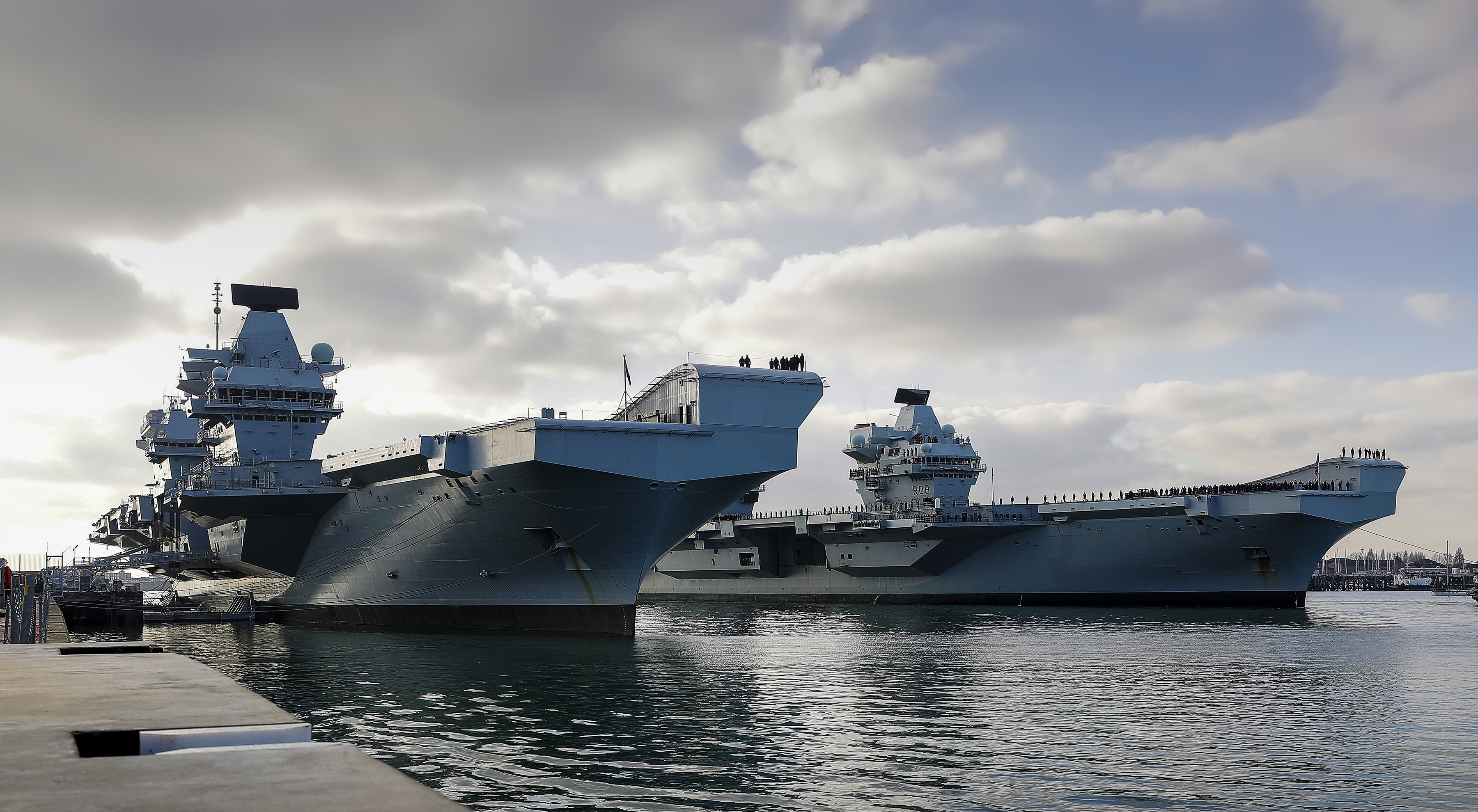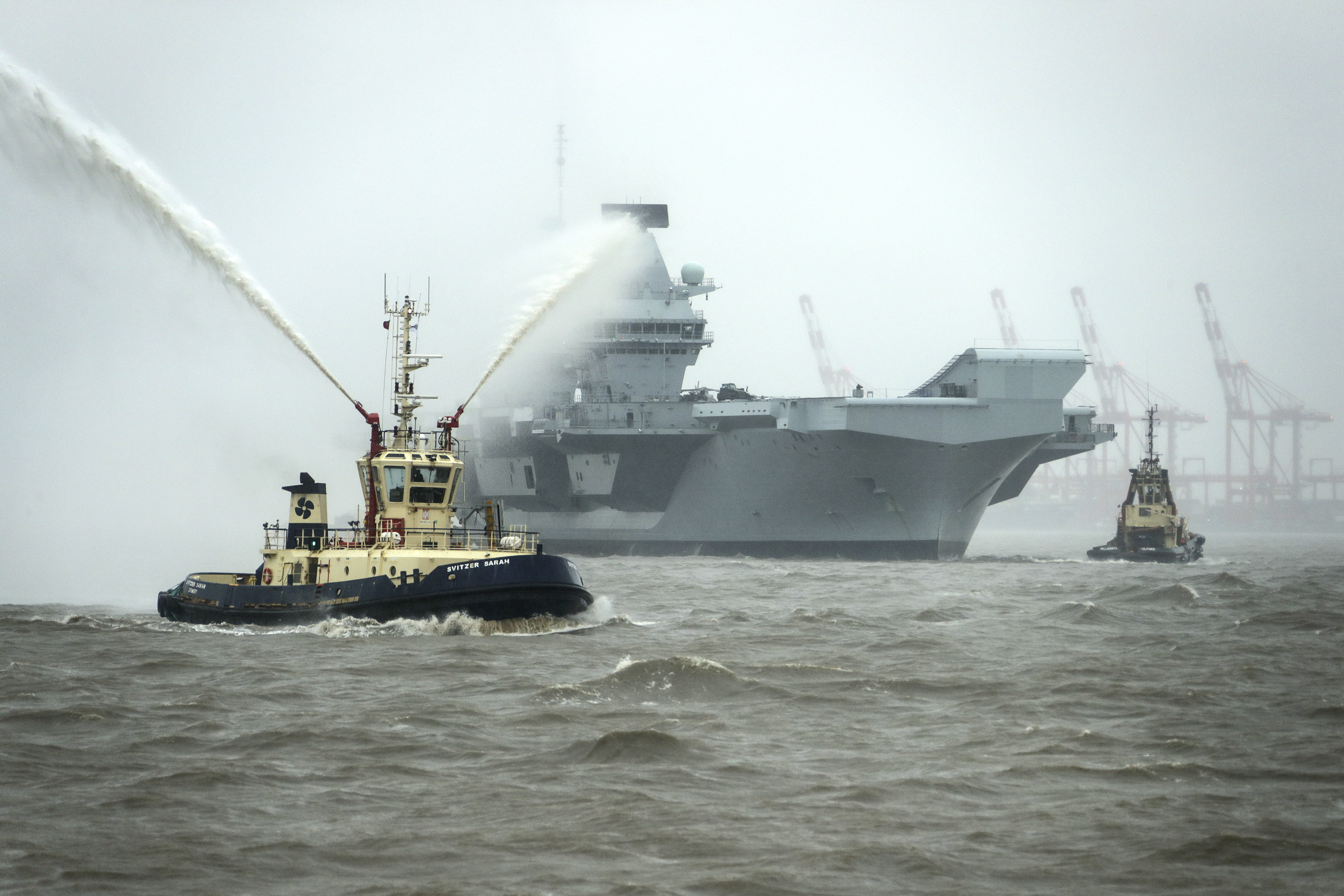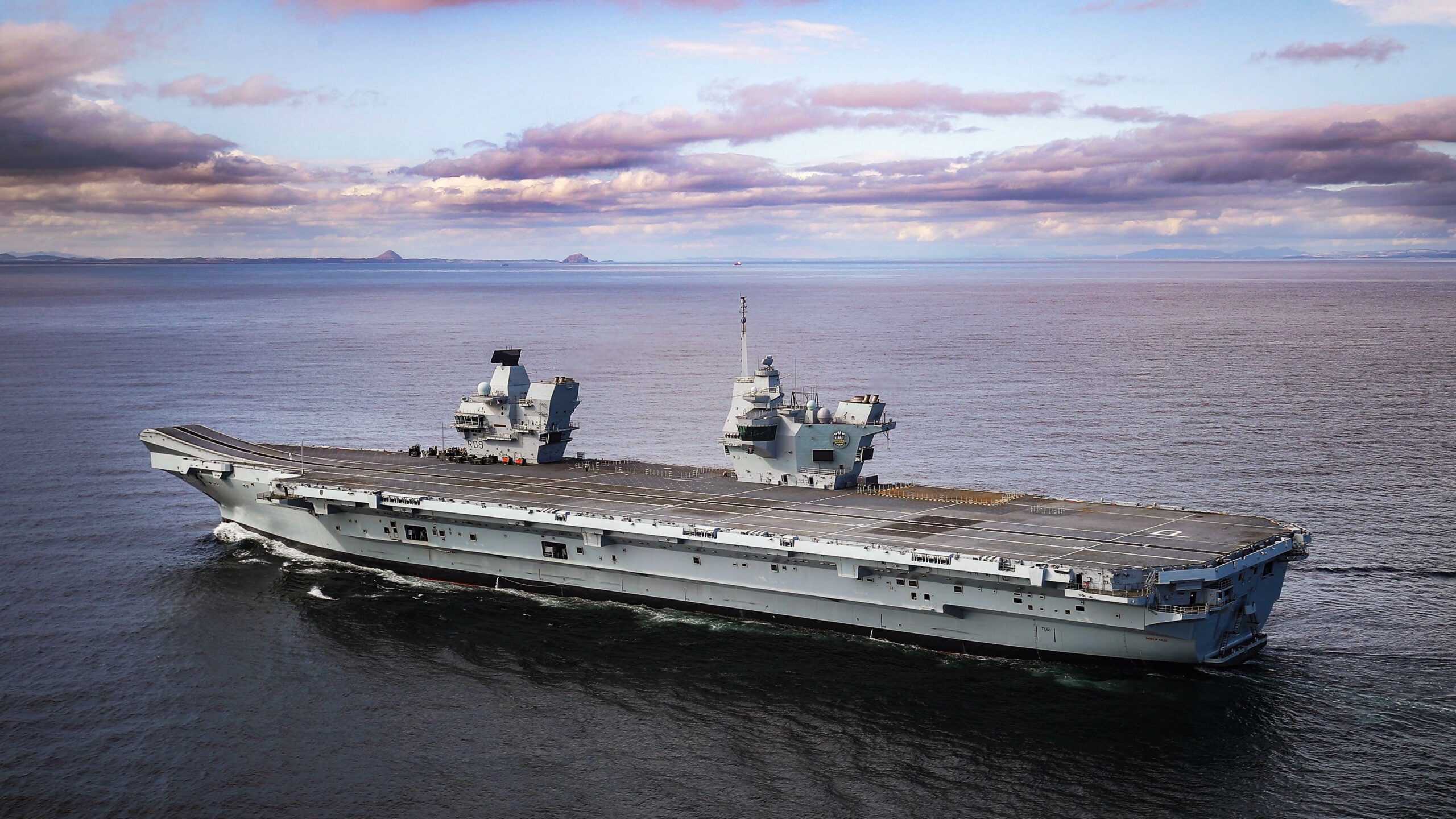A flooding incident aboard the British Royal Navy’s second Queen Elizabeth class aircraft carrier, HMS Prince of Wales, will reportedly prevent the warship from going to sea for at least six months. Repairing the damage will mean a delay for the carrier’s planned sailing to the United States, where it is due to carry out the Westlant 21 trials with the F-35B Lightning short takeoff and vertical landing fighter jet.
The Sun newspaper was first to report today that the damage sustained in the October 16 incident will put the aircraft carrier out of action until spring 2021 at the earliest. The Royal Navy subsequently confirmed the incident had occurred but did not say how long it might take to make the necessary repairs.
“HMS Prince of Wales is alongside at HMNB [Her Majesty’s Naval Base] Portsmouth conducting repairs following a flood in an engine room,” a Royal Navy spokesperson told Naval Technology. “The ship’s company are getting ready to sail for further training and trials in 2021.”
The flood reportedly occurred while the warship was in dock in Portsmouth, on the south coast of England. The warship’s hull was not breached in the latest incident, which is thought to have been the result of faulty pipework leading to a burst fire main — a system that supplies seawater to the fire hydrants to put out any blaze onboard the vessel.

The Sun has published a video, apparently taken by a member of the crew, showing serious flooding below decks. Footage includes water pouring down concrete stairs and submerging electrical cabinets. At one point in the video, a sailor remarks that an engine compartment is filled with at least three feet of water.
“Thousands of gallons of seawater poured into an engine room and submerged electrical cabinets for over 24 hours,” the article states. The process of repairs, including checking miles of cables, “will take months” and is expected to cost “millions” of pounds.
The damage is reported to have affected the ship’s high-voltage electrical system propulsion system, which consists of two Rolls-Royce Marine gas turbine alternators, and four diesel engines, providing a total power of around 110 megawatts.
The website Save The Royal Navy provided the following analysis of how the October flooding may have damaged the aircraft carrier:
“Photos that emerged in October show compartments flooded quite deep in places. The QEC [Queen Elizabeth class] carriers are propelled by electric motors with high-voltage power supplied from diesels and gas turbine generators through a complex system of converters, switchboards and cabling. As warships have increasingly come to rely on electric propulsion, the hazards of high voltages can make damage control more complex and dangerous. Fortunately, the flood did not occur at sea with the engines running and the high-voltage system was probably not in use. However, if elements of the electrical system were submerged in saltwater then it will require stripping out and replacing which will be costly and time-consuming.”

“Following an issue with an internal system in HMS Prince of Wales, the ship’s company removed water from one of the ship’s compartments,” a Royal Navy spokesman told the Sun back in October. “No one was injured and an investigation into the cause of the issue is underway.” At that time, however, the Navy would not disclose if the repairs would disrupt the warship’s planned training schedule.
This is the second flood known to have affected HMS Prince of Wales, which was commissioned into Royal Navy service on December 10, 2019.
In May 2020, another flood affected the warship, and on that occasion, video footage showed water pouring through a ceiling and flooding one of the living quarters.

Other flooding issues have affected her sister vessel, HMS Queen Elizabeth, too. In July 2019, the carrier had to return from sea trials earlier than planned after an internal leak was identified. That incident began with a high-pressure burst that buckled a stairwell, bent several bulkheads, and split deck-plates, causing flooding on several decks and putting three people at risk of drowning, according to Forces News.
Speaking after the event, the then-captain of HMS Queen Elizabeth, Commodore Steve Moorhouse, said: “Floods are part of the business, the really reassuring thing is that my sailors responded exactly as you would want them to, so all done and dusted, we are ready to sail.”
Two years previously, HMS Queen Elizabeth required repairs after a defective rubber seal on a propeller shaft was discovered, allowing seawater to travel along the shaft and enter the ship. “This is scheduled for repair while she is alongside at Portsmouth,” said a Royal Navy spokesperson at the time. “It does not prevent her from sailing again and her sea trials program will not be affected.”
HMS Prince of Wales has not been to sea since returning to Portsmouth on March 25, 2020, after completing sea trials, including a port visit to Liverpool and training in U.K. waters. Another period at sea had reportedly been planned for this fall, to conduct helicopter trials and training. It seems the October flooding incident may have led to this being shelved, at least for the time being.

Any delay to the Westlant 2021 deployment, which will see the first F-35 operations aboard the HMS Prince of Wales, would be a blow to those tasked with bringing the carrier into frontline service. While it’s not clear how any such postponement might affect the broader timeline for the warship’s entry to operational service, according to the Sun, Royal Navy officials have insisted the carrier will still be operational by 2023, as originally planned. That, however, may require the second carrier’s existing workup schedule to be compressed, as some analysts have already suggested.
Regardless, the Royal Navy should still have HMS Queen Elizabeth available for its planned first operational cruise in 2021, which is the next major milestone for the emerging Carrier Strike capability in the United Kingdom. Known as Carrier Strike Group 21, that activity will undoubtedly be the focus for the carrier fleet, as well as the various supporting vessels, aircraft, and helicopters that will be involved.
Thereafter, it remains to be seen what steps will have to be taken to ensure HMS Prince of Wales is ready to sail alongside its sister vessel as part of a two-strong carrier fleet by 2023.
Contact the author: thomas@thedrive.com
